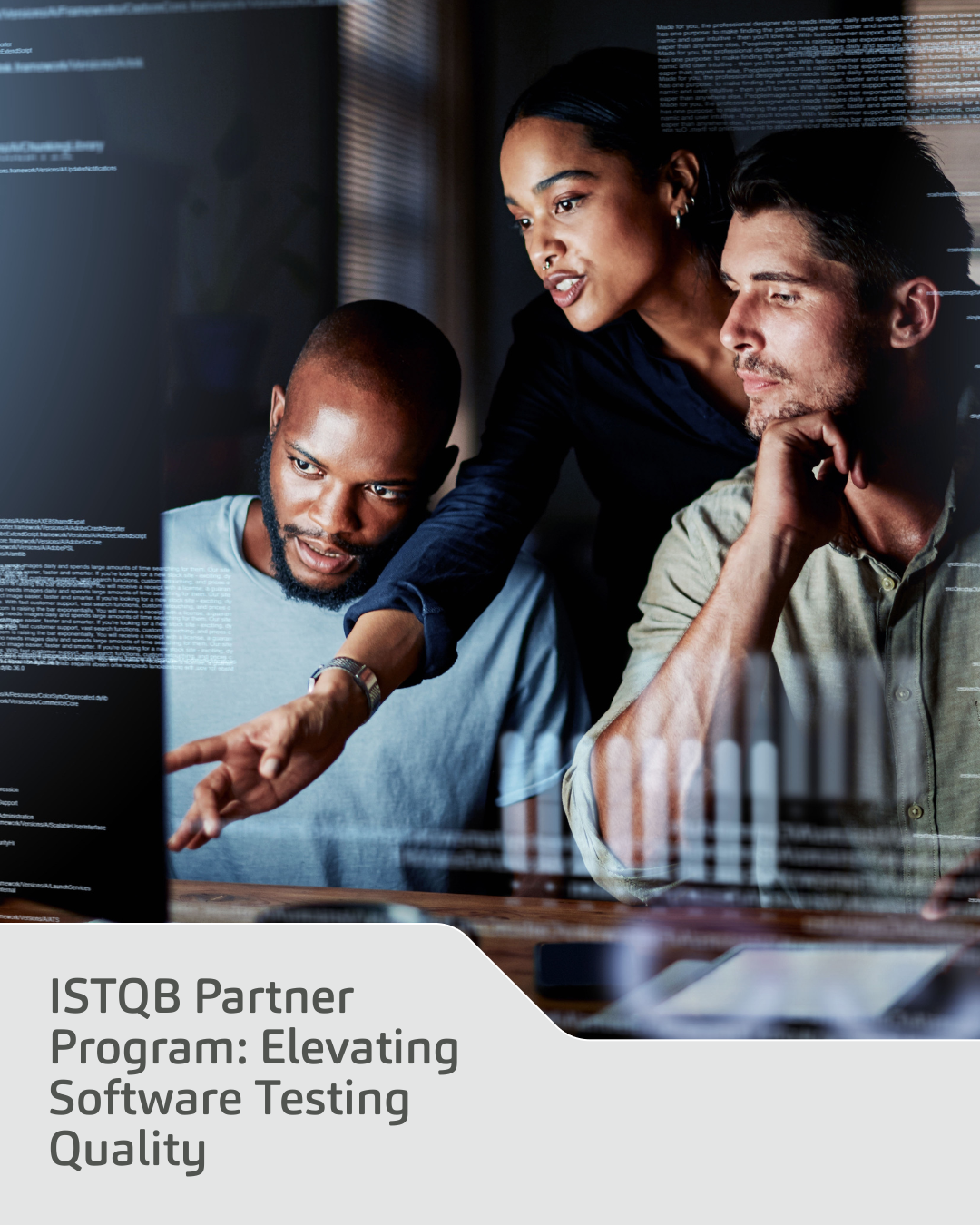Quality isn’t just a feature, it’s the foundation of any successful product. And that foundation is only as strong as the system’s ability to work together in its entirety. That’s why End-to-End (E2E) testing is crucial: it ensures that every part of your system, from user interface to back-end processes, works together seamlessly. By simulating actual user journeys, E2E offers a clear view of the customer experience. It helps catch issues that individual component tests might miss, playing a critical role in delivering software that’s both functional and dependable. End-to-end testing is one of the most effective ways software teams can understand the customer experience, playing a pivotal role in ensuring your software functions in the real world. This blog will guide you through some of the key components of E2E and why you should consider implementing it for your software projects. What is End-to-End Software Testing? First, let’s take a quick look at the meaning of E2E software testing. E2E is a comprehensive way to test your application works as expected. Instead of focusing on individual features or specific functions, E2E testing simulates real-world user scenarios, identifying potential issues before they impact users. Simply put, it checks if a software system can successfully perform all its tasks from start to finish. Why This Type of Testing Matters Today’s software isn’t a monolith; it’s a collection of subsystems, UI, APIs, databases, third-party integrations, all working together. E2E testing ensures that they align, catching missteps that isolated tests might miss, such as a payment gateway failing to sync with an inventory database. E2E testing verifies everything, UI, databases, network communication, and external integrations are in sync, reducing the risk of post-launch failures. At a time where even small glitches can negatively impact user trust or derail a product launch, E2E testing helps businesses build trust and maintain a competitive edge by delivering high-performing, reliable software. Different Types of Testing: Horizontal and Vertical Let’s explore two commonly used E2E software testing methods: Horizontal end-to-end testing is an approach that focuses on validating a system’s functionality across different modules or components within the same layer or level of the application. Unlike vertical testing, which typically checks features or functionality across different layers (database, backend, and frontend), horizontal testing looks at how various modules interact with each other within a single layer. For example, if you’re testing a web application, horizontal end-to-end testing could involve testing how different pages or features within the same user interface work together and ensuring the overall user experience flows smoothly. Alternatively, Vertical E2E deep dives into aspects beyond the simple user interface. It focuses on verifying a complete flow across different layers or components of the software, from the front-end (user interface) to the backend (databases, APIs, etc.). For example, in a vertical E2E test for an online shopping application, you might test the process of a user browsing products (front-end), adding them to the cart, proceeding to checkout, and completing the transaction, while ensuring that data is accurately processed through the server and updated in the database. How to Execute: Automated vs. Manual For the most part, E2E tests can be performed manually. A testing expert simply follows the normal flow of the application and records any sign of defects or defects. However, a good option for handling more complex systems that include an API and database is automated testing. Automated E2E involves using specialized tools and scripts to automatically execute test cases. The process is faster, more efficient, and less prone to human error. Once set up, automated tests can run repeatedly without manual intervention, making them ideal for continuous integration and delivery environments. Which is Most Effective – Automated or Manual? In terms of which route is better automated or manual, it really depends on your project’s requirements, complexity, resources, and goals. Automated is best for large-scale projects or applications that require frequent regression testing and fast execution. It’s ideal for scenarios that don’t change often and where consistency is key. Manual, on the other hand, is a good choice when testing complex user interactions, new features, or when the system is in early development stages. It’s also a better choice for tests that need a human perspective or creativity. In many instances, a combination of both automated and manual works well to balance efficiency and flexibility, ensuring the software meets both functional and user experience standards. Integration vs. End-to-End Software Testing Integration and E2E are both critical aspects of the software testing process, but they focus on different levels of the application. Integration testing involves verifying the interaction between different components or modules of a software system to ensure that they work together as expected, with the goal being to identify issues in the interfaces or data flow between the integrated parts of the system. Alternatively, as already mentioned, E2E tests the entire application workflow, from the user’s perspective, to ensure that all parts of the system work together seamlessly, verifying the complete functionality, from the frontend to the backend, often simulating real user interactions. Both types are essential for delivering reliable, functional software. 5 Benefits of End-to-End Services Whether automated or manual, investing in E2E will ultimately improve the robustness of your software and provide value to both your development team and your users. Here are five reasons to consider integration. Enhanced user experience. By testing the entire system as it would be used in a real-world scenario, E2E identifies issues that hinder a user’s flow. This involves checking that all interactions, such as forms, navigation, and transactions, work smoothly across devices and browsers. This process flushes out UI/UX issues that could disrupt the user journey, allowing for adjustments before the software is released. Improved software quality. By verifying the full user journey, E2E software testing helps identify and resolve issues that might only become apparent when different components of the system interact with each other. This ensures that all pieces of the system work seamlessly together, leading
5 barriers to CI/CD adoption and how to overcome them
For all its promise of speed and efficiency, Continuous Integration and Continuous Delivery (CI/CD) often meets more resistance than enthusiasm. The benefits are undeniable: faster releases, more reliable software, and quicker time-to-value for new features. CI/CD offers a rare opportunity to outpace the competition while minimizing errors and reducing wasted effort. Yet many organizations struggle to get it off the ground, not because the technology isn’t sound, but because the cultural and operational shifts required are harder than expected. But even if you’re leading CI/CD implementation, you still need to bring everyone in the business on board for change to take place and the advantages to be realised. It calls for deep collaboration across teams, clear processes, and a collective commitment to continuous improvement. Without that alignment, even the best tools can fall short. In this blog, we’ll discuss some of the most common barriers to CI/CD adoption and explain how organizations can overcome them. Common barriers to CI/CD adoption When you’re trying something new that requires people to change the way they work, it’s natural to face scepticism. Here are some of the most frequently touted arguments against CI/CD adoption. Concerns about infrastructure At this point in time, it could be true that your business doesn’t have the right infrastructure to support CI/CD. That’s why, before you try out tools and establish best practice, you’ll want to look at your legacy systems and figure out the technical requirements you need to make it work. Having everything mapped out to ensure your infrastructure is CI/CD ready will help ease any concerns that the system won’t be up to scratch. Challenges accepting change Resistance to change is a big cultural challenge that holds back many companies from adopting DevOps practices. It’s common to face resistance from other senior peers who are not aligned with your strategy, or from your development team who are happy with their current working practices. By pinpointing what is causing the resistance you can then address these issues to get buy-in from all stakeholders and bring others onboard. Fears about the lack of expertise This can be difficult to navigate. If you’re not doing CI/CD already, it’s unlikely you’re going to have a team that’s experienced working that way. But until you start, you’re never going to be able to introduce and build that expertise. By hiring the right specialists, leaning on the expertise you do have, and seeking expert advice from qualified partners, you can build confidence and take CI/CD to the next level. Concerns about time There’s no way to get around it—if you’re going to start with CI, some resources and engineers will need to be redirected away from daily tasks to make it happen. And there’s a good chance teams are not going to want to stop shipping features to get implementation moving. But in the long-run automation is worth the short-term frustration. Remind your teams of the benefits and emphasize that they will be able to put more energy into innovative, revenue-generating activities that reflect organisational goals and make a real difference for your customers. Objections about cost Tooling, training, and talent are costly, so it’s easy to just see numbers and little in the way of immediate financial returns. It’s important to demonstrate the revenue the business stands to earn from this approach, and to focus on the long-term gains. CI/CD helps you make the most of your resources, ensuring cost-efficiency and allowing your developers to focus on driving innovation while enabling you to make revenue on deployed features far more quickly. Automated tests and builds ensure code is up to standard and that customers won’t have to wait for manual checks to take place first before they can start using your new features. How to make your case Even business leaders are accountable, and it won’t necessarily be your decision alone to ensure your CI/CD strategy becomes a reality. The following five focus points will keep you on track when making the case to your colleagues. Value – Talk about the value CI/CD brings to teams and the wider organization. Focus on specific pain points and show how CI/CD can deliver change. Increments – You don’t have to change everything all at once. If there’s a team ready to embrace change, start with them, and then use the results to persuade others of the benefits. Measurements – Use data to back up your point. If you have teams that have adopted CI/CD successfully, use your own data. If you’re just getting started, use the best estimates available and compare those with your own metrics. Strategy – Refer to the bigger picture. What are the business goals that CI/CD can help to achieve? Whether that’s releasing features faster, reducing errors, improving security, retaining good employees, or driving revenue. Examples – Look at other organisations that have seen improvements with CI/CD and consult wider research about the benefits. Persistence pays off If your business is open to adopt best practices for organizational success, it’s worth pursuing something you believe will have an impact. But it’s important to remember mindset shifts might not happen straight away, keep the conversation going and be patient. The five focus points mentioned above should help you form a strategy. Another way to build credibility is to bring experts into the conversation. Find your biggest allies across the organization and use their experience and understanding to help others realize the importance of making the shift to CI/CD. Visit the link below to find out more about our work at Q-Pros and the services we offer.
The ISTQB Partner Program: A Gateway to Quality and Excellence in Software Testing
Consistent, high-quality software testing is often what separates reliable systems from those that undermine business performance. Yet many organizations struggle to implement rigorous, standardized quality assurance practices. The International Software Testing Qualifications Board (ISTQB) Partner Program offers a structured path to address this gap, providing both validation and a framework for continuous improvement. This program enhances your organization’s credibility, connects you with a global community of testing experts, and grants access to exclusive resources designed to advance your capabilities. Crucially, as software testing continues to evolve and grow in importance, joining the ISTQB Partner Program ensures that your organization remains at the forefront of quality assurance and testing standards. For those considering membership, understanding the types of partnerships, eligibility criteria, and tangible benefits is essential. This blog breaks down what the ISTQB Partner Program offers and why aligning with it is a step toward long-term excellence in software testing. What is the ISTQB Partner Program? The ISTQB Partner Program is a global initiative that fosters collaboration between ISTQB and various organizations that specialize in training, certification, and software testing services. The program aims to create a network of trusted partners who are aligned with ISTQB’s mission of promoting excellence in software testing. This program is designed to elevate organizations by providing them with a formalized relationship with ISTQB, access to exclusive resources, and recognition as a trusted leader in the field of software testing. Who can Join the ISTQB Partner Program? The program is open to a variety of stakeholders within the software testing and quality assurance ecosystem, including: Training providers – Companies or institutions offering ISTQB-certified training programs to testers and professionals seeking to gain certification. Certification bodies – Organizations responsible for offering ISTQB exams and certification to professionals in software testing. Software testing vendors and service providers – Companies providing testing tools, frameworks, and consultancy services. Academic institutions – Universities and colleges incorporating ISTQB materials into their curricula for students pursuing careers in software testing. Key Benefits of the ISTQB Partner Program Global Recognition Becoming an ISTQB Partner gives an organization international recognition in the field of software testing. ISTQB is a globally recognized and respected entity, and a partnership can be a mark of credibility and trust. This recognition can also help partners expand their reach and attract more clients or students. Access to Exclusive Resources Partners gain access to exclusive ISTQB resources such as training materials, branding, and promotional content. This can aid training providers and certification bodies in offering high-quality services to their customers. Additionally, partners may benefit from the latest updates on ISTQB certifications, trends, and industry best practices. Collaboration and Networking The ISTQB Partner Program allows organizations to collaborate with other industry leaders in software testing. Networking opportunities with experts, other partners, and even ISTQB members themselves can foster new business relationships, share knowledge, and exchange best practices. Marketing and Promotion ISTQB Partners receive marketing support to help increase their visibility. This includes listing in the ISTQB Partner Directory, which is a key resource for organizations seeking certified trainers, exam providers, or other services. Through the Partner Program, companies can also use ISTQB’s branding to promote their services, gaining further credibility in the eyes of potential clients. Exclusive Training Opportunities Partners may also receive specialized training opportunities from ISTQB, ensuring they remain at the cutting edge of software testing techniques and methodologies. This is an excellent way for organizations to upskill their employees and deliver world-class training to clients. Improved Competitiveness By aligning with ISTQB, partners can enhance their competitive edge in the software testing market. Being an official partner demonstrates a commitment to quality and excellence, which can differentiate a business in a crowded market. It provides customers with the assurance that they are working with a certified and reputable entity. Types of ISTQB Partnerships There are different tiers and types of partnership within the program, allowing organizations to choose a level that best suits their needs: Academic partners – For educational institutions that incorporate ISTQB certification into their curricula, offering a solid foundation in software testing principles. Training providers – These partners offer ISTQB-certified training courses to individuals who wish to pursue ISTQB certification in different levels, from Foundation to Advanced levels. Corporate partners – Organizations that integrate ISTQB certification into their employees’ career development programs, ensuring that their teams are skilled in the latest testing methodologies. Exam providers – Organizations authorized to conduct ISTQB exams, ensuring candidates are certified according to ISTQB standards. How to Become an ISTQB Partner To become an ISTQB Partner, an organization needs to meet the eligibility criteria, which varies depending on the type of partnership. Typically, you must demonstrate a commitment to quality in software testing, your expertise in the field, and your alignment with ISTQB’s goals and values. The process usually involves submitting an application that includes organizational details, proof of certification or qualifications, and a commitment to maintaining ISTQB standards. Upon approval, the partner will be granted access to ISTQB’s resources, branding materials, and the benefits outlined above. For more information, visit the ISTQB website here. If your organization is considering this step, Q-Pros can help guide you through the application process and ensure you meet the necessary standards for partnership.
An Introduction to Software Quality Assurance Frameworks
Building high-quality software isn’t just about well-written code, it’s about embedding quality throughout the entire development process. It demands a framework that integrates quality into every phase of the development lifecycle. QA frameworks provide this foundation, offering structure and clear guidance to ensure software is reliable, secure, and performs at its best. A well-implemented QA framework helps teams define clear processes, establish roles, utilize the right tools, and continuously improve. It transforms quality from a set of isolated tasks into a cohesive strategy that drives efficiency and consistency. With multiple frameworks available, each tailored to different methodologies and goals, selecting the right one can greatly elevate your development process. In this blog, we’ll break down the role of QA frameworks in modern software development, their impact on quality assurance, and explore some of today’s most widely used frameworks. What is a Software Quality Assurance Framework? The purpose of a QA framework is to ensure software meets quality standards throughout its lifecycle. By working within a framework’s processes, tools, best practices, and guidelines, organizations can produce functional, reliable, and secure software. And ultimately, that the final product aligns with user needs and overarching business goals. Key Considerations in a Software Quality Assurance Framework The components of a QA Framework work together to ensure software that is tested rigorously, defects are caught early, and the end product is top quality. Let’s explore some of the main ingredients of a QA framework. Software quality control involves processes and methods to monitor work to check if requirements are achieved. It focuses on product reviews and problem eradication before distribution. For small projects, the documentation of such reviews can be checked by the software quality coordinator. Whereas for large projects, a configuration control board may oversee software quality control. To ensure software quality control, the following testing types are applied: Unit testing Integration testing System testing Acceptance testing Software configuration management labels, tracks, and regulates modifications to a system’s software components. This stage includes tasks that ensure that the design and the code are well established. Key elements withing software configuration management include: Component identification – At each stage of development, one of the most basic software configuration management activities is to identify the software components that make up the deliverable. For managing the development process, methodologies should be established, and all component standards should be named. Controlling versions – As software progresses through a series of transitory states known as versions, it is frequently updated. A software configuration management repository or library is a facility for controlling those versions. Control the situation – Software change control is the process of proposing a change to a software component. A change request, an impact analysis of the change, a set of modifications and additions of new components, and a technique for reliably installing new components are all part of modifying a configuration. A plan for quality software typically involves a list of quality controls for verifying a project’s quality. The software quality assurance strategy establishes a structure and principles for writing code that is easy to understand and maintain. Common QA Frameworks We’ve covered the definition of a QA framework and its components now here’s a glance at some of the common methodologies: Waterfall model – A traditional, linear approach to QA, where each phase must be completed before moving to the next, with testing conducted after development. Agile testing – An iterative, flexible approach that integrates testing throughout the development process, focusing on continuous improvement. Scrum – A subset of agile, Scrum divides the process into short sprints, with testing integrated into each sprint. DevOps – Focuses on collaboration between development and operations, with continuous integration and continuous testing ensuring software is always in a releasable state. The Benefits of a Quality Assurance Framework Implementing a QA framework can unlock advantages for both you and your customers. Here are some of the reasons why you might consider following a QA framework: Improved software quality – With clear standards and processes in place, your teams are more consistent and able to produce high-quality software. Increased efficiency – Streamlines workflows, speeds up testing through automation, and reduces rework. Cost savings – Your teams can detect defects earlier, minimizing costly fixes and reducing maintenance expenses. Better risk management – Identifies and mitigates risks such as performance issues and security vulnerabilities early. Enhanced collaboration – Promotes better communication between development, testing, and product teams. Customer satisfaction – Delivers defect-free software that meets user expectations, building trust and loyalty. Data-backed decisions – Provides valuable metrics to inform project and resource management decisions. Scalability – Adapts to projects of any size and supports Agile and DevOps methodologies. Competitive advantage – Helps deliver reliable products faster, improving market position and reputation. Expert Testing Services with Q-Pros To learn more about QA practices and frameworks, or explore our testing services, get in touch today.
5 Ways AI is Solving Software Quality Challenges
AI is becoming an essential tool in software quality assurance, not by replacing traditional methods, but by solving challenges they can’t address alone. And the ever-constant advancements in AI and ML technologies are shaping how we approach testing, forging new proactive, efficient, and accurate approaches to traditional challenges. Conventional testing frameworks rely on predefined scripts and human oversight, which work well for stable, predictable environments. But as development cycles shorten and systems grow more complex, those methods can miss subtle issues and become harder to scale. AI-driven tools bring adaptability and precision to this process. Machine learning models analyze vast amounts of test data, identifying patterns and anomalies that signal potential defects. AI can enhance test coverage by prioritizing high-risk areas, ensuring resources focus on the parts of the application most likely to fail. Techniques like intelligent test generation and self-healing automation also reduce maintenance overhead and keep tests aligned with evolving codebases. As we investigate how AI technology is transforming software, we unlock new ways to harness its power. But how exactly is AI helping solve challenges in QA? In this blog, we will dig deeper into some of the ways AI is helping us make strides in software testing. Data Management Challenges Data gathering and documentation are at the core of any QA process. How well we manage our data determines the level of quality we seek to achieve. One problem testing engineers have struggled with over the years, however, was data management. This data includes: Values and parameters Environment data Build data Data production and data coverage One of AI’s most powerful capabilities lies in data-driven analysis. By processing large volumes of test results, system logs, and production data, AI identifies patterns and anomalies that indicate potential defects. This data-driven approach enables predictive analytics, faster root cause analysis, and smarter defect prevention, helping teams identify issues before they impact users. User data is essential to this testing process, as it informs the decisions on what to test and how to structure tests. By analyzing real-world usage patterns, AI can determine which features or user flows are most critical to test. This ensures testing is aligned with actual usage scenarios, increasing both relevance and coverage. In an era where test configurations can involve millions of scenarios, data-driven testing becomes indispensable. AI helps prioritize the most valuable tests by analyzing risk and usage patterns, ensuring the testing process is efficient and effective. This approach minimizes time spent on less impactful tests while focusing resources on high-risk areas that matter most. Time Challenges As Organizations look for ways to drive the DevOps process, AI is becoming a clear factor in this effort. The technology significantly speeds up repetitive tasks, reducing development time while ensuring quality and consistency. By using AI to analyze quality trends and assess code-changing risks, developers can then plan for better more efficient sprints. Continuous Integration and Continuous Testing AI can be integrated into continuous integration and continuous deployment pipelines to automatically test new code changes, ensuring that defects are detected and resolved immediately. AI-driven tools can optimize test execution by only running the tests relevant to recent code changes, speeding up the feedback loop while maintaining high-quality standards. Enhancing Performance Testing Performance testing is a critical aspect of software quality, especially for applications with high user traffic or complex operations. AI can help in simulating real-world load conditions by analyzing user behavior patterns and predicting how the system will perform under various scenarios. AI tools can automatically scale test scenarios, adjusting them to replicate more accurate and complex user interactions, helping to identify bottlenecks. Continuous Monitoring An exciting future is ahead in the world of software development, and it is only fair to extend the same level of advancements to the world of testing services. In future years, we will begin to see automated functions running in the background, constantly analyzing every level of code. The use of AI will lay the groundwork for continuous progress, enabling humans to concentrate on more creative and meaningful tasks in development. Other things to consider Aside from the above five challenges, here are some other important points to consider. Cognitive Automation While the need for human intervention in software testing will always remain, it’s key to adapt and collaborate with automated methods. For as long as software is designed to be used by humans, the need for human testers will remain. QA engineers must harness the benefit of AI and make use of every viable way to automate the testing process. This allows for more time for creative thinking and planning for more tests and areas to serve the overall project. AI Testing and Shifting Left In recent years, and with the emergence of such work models like agile and DevOps, testers started shifting left – which means testing is now becoming more present in the initial stages of development. The role of AI in shifting left is that it asserts cooperation values and by doing so allows the development teams to co-exist and align better with the testing team. One way to deliver better quality to the product is to involve the testing team in more stages, such as early planning and sprint execution. Conclusion Establishing good foundations with AI and ML tools is a huge asset for software quality. Through AI we gain more information from data builds, code changes, and test history, reducing thousands of possible configurations. And automation allows us to analyze data in real time. By empowering the testing team through automated tools, we receive better and faster results. Software testing involves a set of unavoidable challenges. It comes down to either working hard or working smart. While we intend to do both, it is paramount that we remain on top of modern advancements in intelligent technologies. Leading the way in creative testing Q-Pros provides testing services at all levels, relying on manual and automated testing methods and tools to assure the best quality for our clients. We can tailor testing plans to
Q-Pros Joins Forces with Inflectra to Elevate QA Excellence Across GCC and the US
We’re thrilled to announce our new partnership with Inflectra, a global leader in software test management and enterprise portfolio management solutions. Founded in 2006, Inflectra has quickly become a leader in the world of software solutions, providing cutting-edge tools that transform how teams approach project management, software development, and quality assurance. The company’s powerful suite of tools is designed to manage every stage of the software development lifecycle, from planning and requirements management to testing and release. Expanding Regional Reach and Capabilities This partnership opens the door to many exciting opportunities. Through Q-Pros’ extensive regional expertise and Inflectra’s innovative technology solutions, we aim to deliver unparalleled value to customers across the US and GCC. Together, we will empower businesses in key industries such as government, oil & gas, finance, telecom, and eCommerce with cutting-edge solutions and services. Khalil Talal, Managing Director at Q-pros, commented: At Q-Pros, our mission has always been to elevate the standards of software quality across industries. And while each industry presents unique challenges, we’ve learned that efficiency and adaptability are always key to success. Every engagement we undertake is an opportunity to deliver not just services but real value. With our new partnership with Inflectra, we are excited to further expand our reach and bring this value to our clients in the US and GCC.” Adam Sandman, CEO of Inflectra, added: “We are thrilled to partner with Quality Professionals to expand our reach and bring unparalleled value to our clients in the GCC and the US. This partnership exemplifies our dedication to fostering strong regional alliances that enhance our partner program and enable our customers to achieve their goals with confidence. By combining Q-Pros’ exceptional consulting expertise with Inflectra’s innovative solutions, we are poised to make a significant impact across industries.” Why this Partnership Matters This partnership strengthens our commitment to deliver effective and efficient services at real value to our customers. With this new alliance, we can more effectively bring this value to our clients in the US and GCC. With Q-Pros’ extensive QA experience and Inflectra’s robust technology platforms, we aim to help clients: Achieve higher software quality with reduced rework costs. Increase end-user satisfaction by delivering defect-free applications. Seamlessly adopt and implement best practices in QA and software development. About Inflectra Inflectra is a software company that provides tools for project management, software development, and quality assurance. Founded in 2006, Inflectra has become known for offering comprehensive, scalable solutions designed to help teams improve their workflows and enhance product quality. The company’s focus is on providing tools that support Agile methodologies, DevOps practices, and software testing. Inflectra’s products are used by a variety of industries, including technology, finance, healthcare, and government. For more information, visit: www.inflectra.com
Join us at GITEX Asia 2025!
GITEX Asia: April 23–25, 2025 in Singapore. Don’t miss the chance to connect with the experts at Q-Pros and explore the future of software testing at GITEX Asia 2025! We’re excited to share that Q-Pros will be attending GITEX Asia 2025 in Singapore from 23 – 25 of April. Our Business Development and Operations Director, Hülya Kayaci, and Relationship Manager,Tracy Abou Azar, will be on-site connecting with industry leaders and exploring what’s next in the world of tech. If you’re attending GITEX Asia and want to talk about QA, innovation in testing, or potential collaboration, let’s set up a time to meet. Click here to email Hülya Kayaci or here to arrange a meeting with Tracy Abou Azar. Whether you’re a partner, a client, or someone just curious about QA or software testing—we’re excited to meet you. About GITEX ASIA Taking place in Singapore, GITEX Asia is a hub for the latest advancements in technology, featuring a dynamic mix of cutting-edge innovations, insightful conferences, and hands-on experiences. As one of the largest and most recognized tech exhibitions in the world, GITEX Asia serves as a premier platform for showcasing emerging technologies such as artificial intelligence (AI), machine learning, 5G, cloud computing, and automation. It attracts top companies and industry leaders from diverse sectors like software development, IT infrastructure, digital transformation, and more. Find out more at: www.gitexasia.com
We’re heading to STAREAST in Orlando
STAREAST: April 27–May 2, 2025 in Orlando, Florida USA. See us there and learn how we can help. We’re thrilled to announce that Q-Pros will be exhibiting STAREAST 2025, one of the premier software testing conferences in the world, taking place in Orlando, Florida. As an organization committed to staying ahead of the curve in software quality assurance, attending this event is an invaluable opportunity for our team to learn, network, and bring back fresh ideas to continue delivering outstanding software testing services. Where can you find Q-Pros Visit us and meet our experts at our booth (no.17-18), who will be on hand to answer your questions and help you discover how our services can meet the unique needs of your business. Plus, enter our exciting giveaway for your chance to win a pair of Apple Max headphones! Why We’re Excited to Attend the Event At Q-Pros, we are always looking for ways to improve our testing practices and expand our knowledge base. STAREAST 2025 presents an opportunity for our team to: Explore the latest trends in software testing – From AI-powered test automation to continuous testing in Agile and DevOps, the world of software testing is constantly evolving. We’re eager to dive deep into these innovations and discover new tools and techniques that can improve our processes. Network with industry leaders – STAREAST is a fantastic networking opportunity. We’ll be connecting with like-minded professionals, industry thought leaders, and vendors who are shaping the future of software testing. We look forward to sharing insights and learning from the experiences of others in the field. Enhance our skills – With more than 100 sessions, workshops, and hands-on labs available, there’s something for every member of our team. We’re excited to attend practical sessions that focus on real-world solutions to common challenges in testing, ensuring we bring back actionable knowledge that we can implement right away. About the event STAREAST is one of the largest and most prestigious conferences dedicated to software testing and quality assurance. This event brings together experts, thought leaders, practitioners, and innovators from across the globe to discuss the latest trends, challenges, and best practices in the software testing world. From keynote speakers to in-depth workshops and hands-on learning sessions, STAREAST offers a wealth of knowledge that we’re eager to explore. Heading to STAREAST in Orlando? It’s a great opportunity to meet us, discuss how Q-Pros might work for you, or simply find out more about what we do. If you’d like to discuss your business needs, get in touch to arrange a 1:1 appointment. Contact Our Team Let’s Discuss
Mastering DevOps: A Simple Guide to Start Your Journey
Before DevOps, software developers relied heavily on sequential, manual processes like the Waterfall model, where distinct phases—coding, testing, deployment—kept teams separated and extended delivery timelines. This rigid structure often led to inefficiencies, delayed releases, and misaligned priorities between development and operations, prompting a rethink toward more integrated, collaborative approaches. DevOps grew out of the need to bridge development and operations, starting as an idea to speed up software cycles in the early 2000s and becoming standard practice today. Fueled by the push for agility and better tools, it’s now the go-to for delivering fast, dependable software that keeps organizations competitive. Among the benefits, successful DevOps adoption drives faster, more dependable software deployment and delivery, increased operational efficiency and reduced security and compliance risks. This flourishing IT philosophy can transform an organization’s ability to deliver applications and services at pace and scale. As well as a tech phenomenon, it’s now a strong career prospect, accessible to a broad spectrum of IT professionals. But DevOps rapid rise to the top has meant many organizations and professionals occupying the IT space need to get to grips with it—and fast. In this blog, we’ll help you kickstart your DevOps journey, examining the meaning of DevOps, its technologies, and how it can help solve common business challenges. What is DevOps? DevOps—the unification of development (Dev) and operations (Ops) teams—is a software development methodology that integrates and automates processes between development and IT teams through a combination of cultural philosophies, tools and practices. This approach is all about team empowerment, cross-team communication and collaboration and technology automation. An effective DevOps approach empowers organizations to build and deliver applications and services faster and more efficiently, driving both speed and quality in deployment. Fundamental technologies and processes At a distance, there are three main stages: build, test and deploy to reflect the natural order – i.e. build the code, then test and deploy it. However, if we look more closely, we will find more layers are attached to these three stages. All in all, there are nine key stages that you need to know. They include Plan, Create, Verify, Package, Release or Deployment, Configure, Monitor, Protect, and Manage. The stages operate in an ongoing cycle, with security woven into every stage of the process. When security is not an afterthought and runs throughout the process (as in a DevOps approach), issues, vulnerabilities and bugs are dealt with as they occur. Key DevOps technologies you should understand When discovering all you need to know about DevOps, you can’t fully understand it without reading up on the technologies that contribute to its success. Here are some of these key technologies in more detail. Source Code Management (SCM) SCM is used to track modifications to a source code repository. It plays a crucial role in easing the organisational burden of growing development costs. It tracks a running history of changes to a code base, which helps resolve conflicts when merging updates from multiple contributors. Code is separated and managed into projects and groups of projects. An individual developer checks out existing code or adds code to what’s there and the SCM tool identifies conflicting edits to the same code and flags it for resolution. It’s a process which enables many developers to work on one project, ultimately increasing the speed of software updates. Continuous integration (CI) Continuous Integration (CI) is a core DevOps practice that keeps development fast, efficient, and reliable. It focuses on automating the integration of code changes from multiple developers into a shared project, ensuring that new code is consistently built, tested, and validated. With CI, code changes are merged into a central mainline where automated tools quickly verify their accuracy through builds and tests. This early and continuous feedback loop helps teams catch security vulnerabilities and errors much sooner in the development lifecycle—reducing risk and simplifying fixes. By combining automation with regular testing, CI enables faster iteration, smoother collaboration, and increased overall efficiency, laying a strong foundation for high-quality software delivery. Continuous delivery (CD) CD is a software development process typically paired with CI to form a chain of processes for software development, deployment and feedback loops called a CI/CD pipeline. Once code has been tested and built as part of CI, CD is the next part of the process. It runs the final stages to check code is ready to deploy and can cover everything from provisioning the infrastructure to deploying the application to the testing or production environment. This approach means that development teams produce and test code in short but continuous cycles. It encourages more incremental updates and enables teams to build, test and reliably release software quickly and at any time. Automated testing Automated testing is a process that certifies software is functioning appropriately and meeting requirements before it is released into production. Building it into the CI pipeline is critical for fast and high-quality delivery as it enables your teams to release higher quality code more frequently. With this in place, security issues are detected earlier, enabling your teams to deploy with confidence. Shifting security left A shift left approach in DevOps incorporates security into the end-to-end automation. Often referred to as DevSecOps, shifting left integrates testing and the security review process earlier in the software development lifecycle. DevOps integrates security into your CI pipelines, testing code continuously. In doing so, your teams can deal with security issues as and when they arise, as opposed to at the end of the cycle as under the traditional software development model. Feedback Feedback is an invaluable piece of the puzzle that’s essential for improving your overall DevOps process and user experience. A DevOps feedback loop is easy to navigate through rapid iterations and collaboration. It provides access to data that’s clear and easy to manage, so feedback is easier to incorporate and deliver improvements. Automating feedback is key, as it ensures quick information collection and distribution amongst the team. Teams can go forward and deliver updates in an efficient manner. Problems solved by










